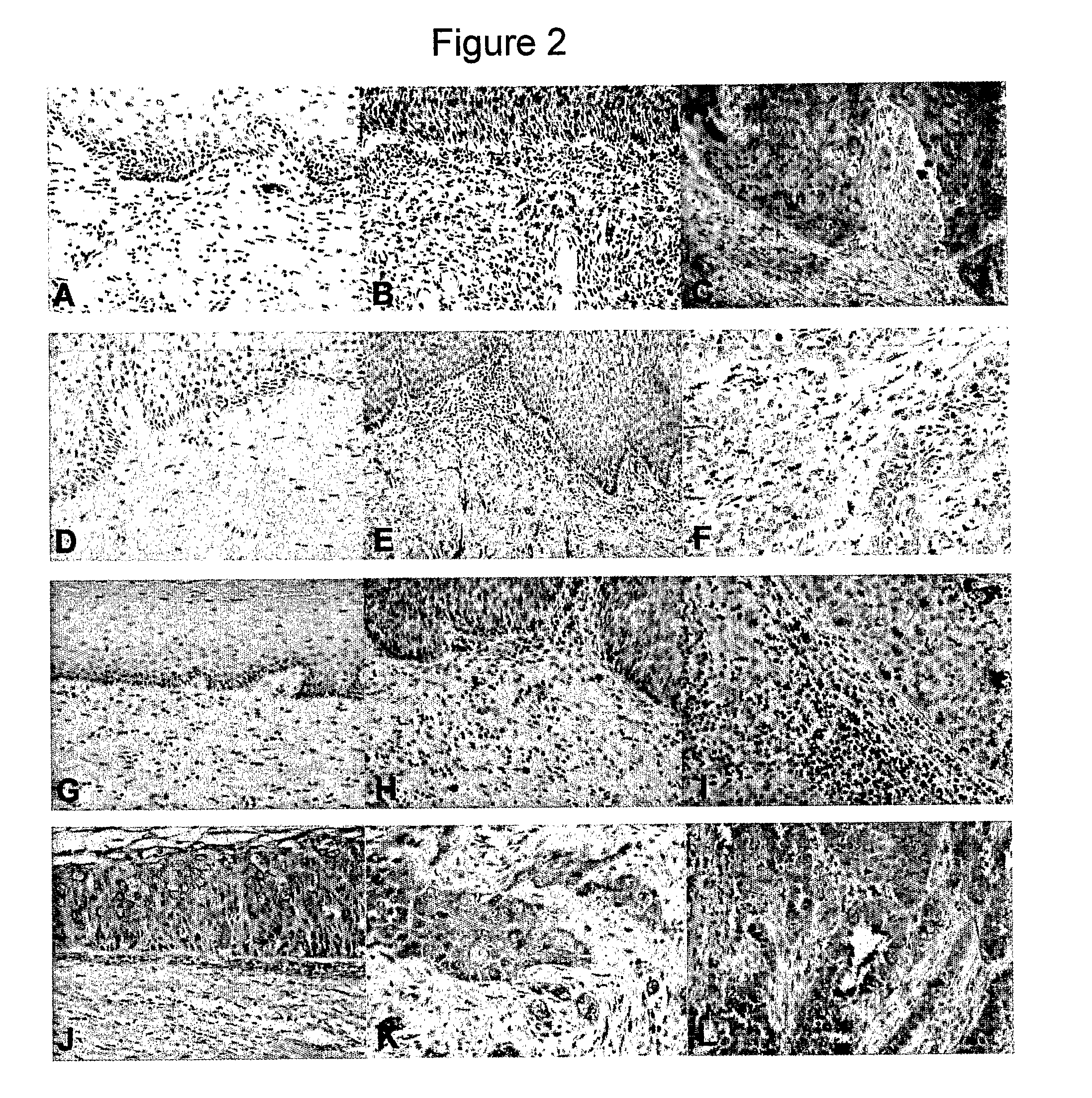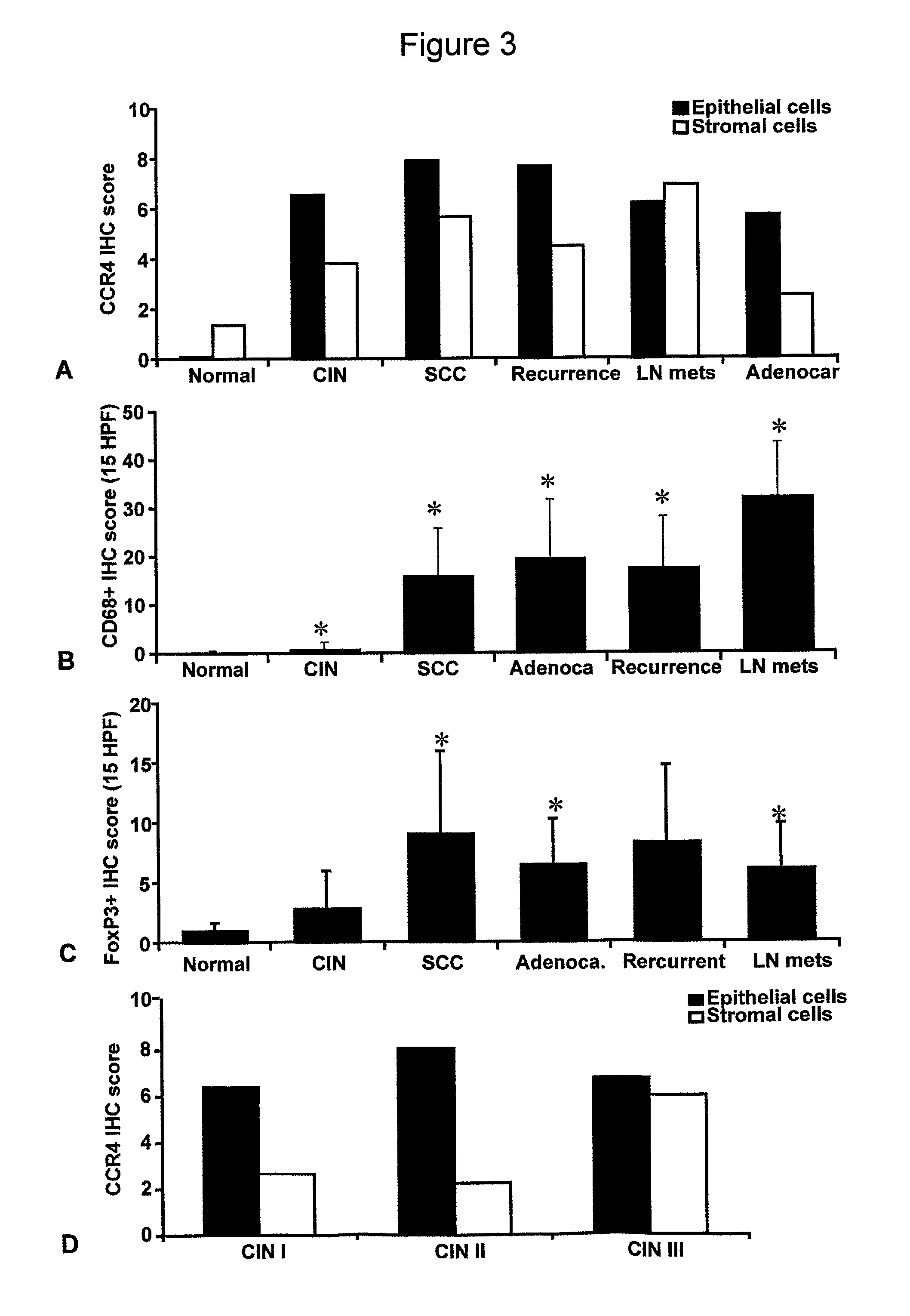Cancer marker and therapeutic target
a cancer marker and therapeutic target technology, applied in the field of cancer markers and therapeutic targets, can solve the problems of reducing the survival rate of patients, improper treatment, and large number of false positives, and achieve the effects of improving the survival rate, enhancing the specificity, and altering the stability of the targ
- Summary
- Abstract
- Description
- Claims
- Application Information
AI Technical Summary
Benefits of technology
Problems solved by technology
Method used
Image
Examples
examples
Cervical Tissue Samples and Oesophageal Specimens
[0258]For the mRNA studies, fifteen tumour biopsies from patients with cervical cancer (11 squamous cell carcinoma, S1-S11, and 4 adenocarcinomas, A1-A4) and 14 samples of non-neoplastic cervical tissue (N1-N14) were obtained during surgery and snap-frozen in liquid nitrogen. Diagnosis was made by the pathology department of Barts and The London NHS Trust. Patient samples were divided according to the FIGO classification (stage I, II, III, IV) and tumour biopsies were classified according to increasing grade of nuclear atypia (1, 2, 3) or as well, moderately, or poor differentiation.
[0259]For immunohistochemistry, paraffin embedded samples (n=166) from 150 different patients were obtained from Barts and The London NHS Trust and the Clinical Centre of Serbia, Belgrade. Access to fresh and paraffin-embedded human samples satisfied the requirements of the East London and City Health Authority Research Ethics Subcommittee (LREC no. T / 02 / 0...
PUM
| Property | Measurement | Unit |
|---|---|---|
| amino-acid sequence | aaaaa | aaaaa |
| size | aaaaa | aaaaa |
| frequency | aaaaa | aaaaa |
Abstract
Description
Claims
Application Information
 Login to View More
Login to View More - R&D
- Intellectual Property
- Life Sciences
- Materials
- Tech Scout
- Unparalleled Data Quality
- Higher Quality Content
- 60% Fewer Hallucinations
Browse by: Latest US Patents, China's latest patents, Technical Efficacy Thesaurus, Application Domain, Technology Topic, Popular Technical Reports.
© 2025 PatSnap. All rights reserved.Legal|Privacy policy|Modern Slavery Act Transparency Statement|Sitemap|About US| Contact US: help@patsnap.com



